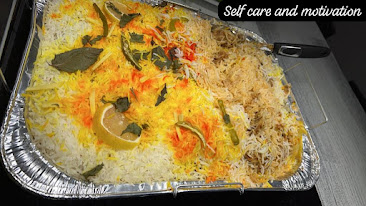Food || We Are What We Eat: Pakistani Cuisine
Introduction:
Pakistani cuisine is a true culinary treasure, brimming with a rich history, vibrant flavors, and a unique blend of regional influences. From aromatic biryanis to spicy curries and succulent kebabs, Pakistani food offers a gastronomic adventure that will tantalize your taste buds and leave you craving for more. In this blog post, we will delve into the captivating world of Pakistani cuisine, uncovering its diverse dishes, traditional cooking methods, and the cultural significance of food in this South Asian nation.
1. A Melting Pot of Flavors:
Pakistani cuisine is a harmonious fusion of various culinary traditions, including Central Asian, Middle Eastern, and Indian influences. The diverse regional cuisines of Pakistan, such as Punjabi, Sindhi, Balochi, and Pashtun, contribute to the wide array of flavors and cooking techniques found in the country.
2. Staple Ingredients:
The foundation of Pakistani cuisine revolves around a few staple ingredients that form the basis of many dishes. These include rice, wheat, lentils, meat (particularly chicken, beef, and lamb), vegetables, and a plethora of aromatic spices such as cumin, coriander, turmeric, and chili powder.
3. Signature Dishes:
(a) Biryani:
Biryani is a fragrant rice dish cooked with layers of marinated meat, aromatic spices, and saffron-infused rice. This beloved dish is a symbol of celebration and is prepared in various regional styles, including Karachi, Hyderabadi, and Lucknowi.
(b) Karahi:
Karahi is a delectable dish named after the traditional cooking vessel it is prepared in. It features succulent pieces of meat (usually chicken or mutton) cooked in a spicy tomato-based gravy, flavored with ginger, garlic, and an assortment of spices.
(c) Nihari:
Originating from the streets of Old Delhi, Nihari is a rich and flavorsome slow-cooked stew made with tender beef or lamb, simmered for hours with a melange of spices. This aromatic dish is traditionally enjoyed for breakfast with naan bread.
(d) Haleem:
Haleem is a hearty and wholesome dish made from a combination of lentils, wheat, and meat (usually beef or chicken). Slow-cooked to perfection, it is flavored with spices and garnished with fried onions, ginger, and fresh coriander.
(e) Paye/Paya:
Paye, also known as "Paya," is a traditional Pakistani dish that is popular in various regions of the country, particularly in Punjab and Sindh. Paye is often served with naan (traditional bread) or rice, and some people prefer to garnish it with fresh ginger, green chilies, cilantro, and a squeeze of lemon juice.
4. Street Food Delights:
Pakistani street food is a culinary adventure in itself, with vendors serving up an array of tempting snacks and savory treats. From the famous Bun Kebabs and Gol Gappay (pani puri) to the spicy Aloo Tikki and Seekh Kebabs, Paye, daal chawal and the indulgent falooda, the bustling streets of Karachi, Lahore, and Islamabad are a haven for food enthusiasts.
5. Cultural Significance:
Food in Pakistan is not just about sustenance; it is deeply intertwined with cultural celebrations, traditions, and hospitality. Pakistani people take immense pride in their culinary heritage and often showcase their love for food through elaborate feasts and hospitality. The traditional concept of "meetha" (sweet) and "namkeen" (salty) embodies the essence of Pakistani hospitality. From weddings to religious festivals like Eid, food plays a central role in bringing people together and fostering a sense of community.
Remember
Pakistani cuisine is a treasure trove of flavors, traditions, and culinary artistry. Every dish tells a story, and Pakistani cuisine tells a tale of rich traditions, vibrant flavors, and the love for good food. Let your taste buds travel to the enchanting world of Pakistani flavors, and experience the magic that awaits you in each bite.










0 Comments